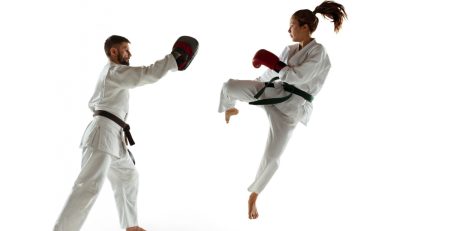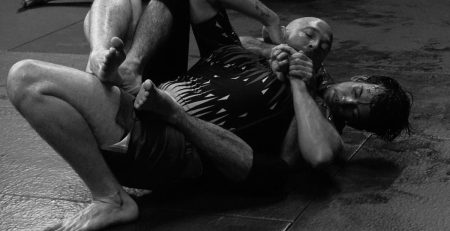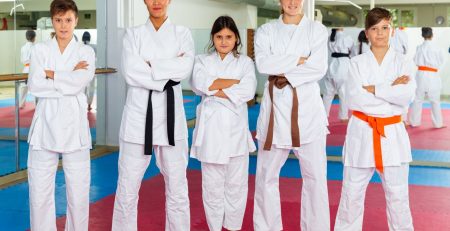Gracie Jiu Jitsu vs Brazilian Jiu Jitsu – Which Will Reign Supreme?
Table of Contents
- Introduction
- Historical Background
- The Origins of Gracie Jiu-Jitsu
- The Development of Brazilian Jiu-Jitsu
- Philosophy and Core Principles
- Gracie Jiu-Jitsu Philosophy
- Brazilian Jiu-Jitsu Philosophy
- Training Methodologies
- Training in Gracie Jiu-Jitsu
- Training in Brazilian Jiu-Jitsu
- Sport vs Self-Defense
- The Sport Aspect of BJJ
- The Self-Defense Focus of GJJ
- Competition and Techniques
- BJJ in Competitions
- GJJ Techniques for Self-Defense
- Modern Evolution
- The Growth of Brazilian Jiu-Jitsu
- The Evolution of Gracie Jiu-Jitsu
- Famous Practitioners and Influences
- Notable Figures in BJJ
- Prominent Names in GJJ
- Global Impact and Popularity
- BJJ’s International Reach
- GJJ’s Influence on Martial Arts
- Conclusion
- Comparing and Contrasting GJJ and BJJ
- Final Thoughts
Introduction
Gracie Jiu-Jitsu (GJJ) and Brazilian Jiu-Jitsu (BJJ) are two terms often used interchangeably in the martial arts community, yet they represent distinct aspects of a combat sport that has captured the interest of practitioners worldwide. The roots of both can be traced back to the early 20th century in Brazil, where the Gracie family modified and adapted traditional Japanese Jujutsu techniques to create a new form of self-defense. This blog aims to dissect the differences and similarities between Gracie Jiu-Jitsu and Brazilian Jiu-Jitsu, examining their historical origins, philosophies, training methods, and their evolution over time. By understanding these facets, practitioners and enthusiasts can better appreciate the rich legacy and unique attributes of each style.
Historical Background
The Origins of Gracie Jiu-Jitsu
The story of Gracie Jiu-Jitsu begins in the early 1900s with Gastão Gracie, a businessman from Rio de Janeiro, Brazil. In 1916, Gastão met Mitsuyo Maeda, a Japanese judoka and martial artist who was demonstrating his skills at a circus in Belém. Maeda, also known as Count Koma, was a master of Judo and Japanese Jujutsu. Gastão’s eldest son, Carlos Gracie, was introduced to Maeda, who agreed to teach him the art of Judo.
Carlos Gracie excelled under Maeda’s tutelage and began teaching his younger brothers, including Helio Gracie. Helio, who was physically smaller and weaker than his brothers, found many of the traditional Judo techniques difficult to execute. This challenge led Helio to adapt and modify the techniques to suit his physique, focusing on leverage, timing, and efficiency rather than strength and power. These adaptations formed the foundation of what would become Gracie Jiu-Jitsu.
The Development of Brazilian Jiu-Jitsu
Brazilian Jiu-Jitsu evolved from the techniques and principles of Gracie Jiu-Jitsu as it spread beyond the Gracie family. In the 1980s and 1990s, members of the Gracie family, including Rorion Gracie, brought the art to the United States, where it gained significant popularity. Rorion played a crucial role in establishing the Ultimate Fighting Championship (UFC) in 1993, showcasing the effectiveness of BJJ in no-holds-barred competition. Royce Gracie, one of Helio’s sons, dominated the early UFC events, demonstrating the superiority of Brazilian Jiu-Jitsu over other martial arts in real combat situations.
As BJJ gained international recognition, it began to diverge from its self-defense roots, incorporating more techniques suited for sport and competition. The sport aspect of BJJ introduced point systems, weight classes, and time limits, which influenced the development of new techniques and strategies. While Gracie Jiu-Jitsu continued to emphasize self-defense and practical applications, Brazilian Jiu-Jitsu flourished as a competitive sport with a global following.
Philosophy and Core Principles
Gracie Jiu-Jitsu Philosophy
Gracie Jiu-Jitsu is grounded in the philosophy of self-defense and the ability to overcome larger and stronger opponents through technique, leverage, and strategy. The Gracie family emphasizes the importance of realistic self-defense scenarios and the application of Jiu-Jitsu techniques in real-world situations. The core principles of GJJ include:
- Efficiency: Utilizing techniques that require minimal strength and energy, allowing a smaller person to defend against a larger attacker.
- Patience and Control: Waiting for the right moment to apply a technique, maintaining control over the opponent, and avoiding unnecessary risks.
- Self-Defense: Focusing on techniques that can be used effectively in street fights and self-defense situations, rather than purely for sport.
The Gracie University, established by Rener and Ryron Gracie, offers a comprehensive curriculum that includes Gracie Combatives, a course designed to teach essential self-defense techniques. The philosophy extends to empowering individuals to protect themselves and their loved ones, emphasizing practical applications over competition success.
Brazilian Jiu-Jitsu Philosophy
Brazilian Jiu-Jitsu, while rooted in the same principles as Gracie Jiu-Jitsu, has evolved to incorporate a broader range of techniques and strategies, particularly those suited for competition. The philosophy of BJJ emphasizes adaptability, continuous learning, and innovation. Key principles include:
- Technical Mastery: Constantly refining and expanding one’s technique repertoire to stay competitive and effective on the mat.
- Adaptability: Being able to adjust strategies and techniques based on the opponent’s actions and the context of the match.
- Competition and Sportsmanship: Valuing the importance of competition as a means to test skills, improve, and foster a sense of community among practitioners.
BJJ academies around the world offer training programs that cater to both recreational practitioners and competitive athletes, highlighting the versatility of the art. The sport’s competitive nature has driven the development of advanced techniques and innovative strategies, making BJJ a dynamic and ever-evolving martial art.
Training Methodologies
Training in Gracie Jiu-Jitsu
Training in Gracie Jiu-Jitsu places a strong emphasis on self-defense and real-world applications. Classes typically begin with a warm-up, followed by instruction in specific techniques, and then practical drills. The training is structured to ensure that students can effectively apply what they learn in real-life situations.
- Self-Defense Focus: Techniques are taught with an emphasis on defending against common attacks such as punches, kicks, and grabs. Students learn to neutralize threats and control their opponents safely and effectively.
- Progressive Learning: The curriculum is designed to progress from fundamental techniques to more advanced applications. Beginners start with basic movements and positions, gradually building their skills and confidence.
- Live Drills and Sparring: While sparring is a component of training, it is often controlled and focuses on applying self-defense techniques rather than competitive strategies. This approach ensures that students develop practical skills that can be used in real-life situations.
Gracie Jiu-Jitsu schools often offer specialized courses such as Gracie Combatives, Women’s Empowered, and Bullyproof programs for children. These courses are tailored to specific needs and emphasize the practical application of Jiu-Jitsu techniques in various scenarios.
If you’re interested in exploring the distinctions and training approaches of Brazilian Jiu-Jitsu (BJJ) and Gracie Jiu-Jitsu (GJJ), there are several resources available.
Training in Brazilian Jiu-Jitsu
Training in Brazilian Jiu-Jitsu is often more sport-oriented, with a focus on preparing students for competition. Classes typically include a warm-up, technique instruction, drilling, and live sparring (rolling). The training environment encourages experimentation and adaptation, fostering continuous improvement.
- Technique and Drilling: Students learn a wide range of techniques, including submissions, sweeps, and positional control. Drilling these techniques is a crucial part of training, allowing students to refine their movements and develop muscle memory.
- Rolling: Sparring or rolling is a fundamental aspect of BJJ training. It provides an opportunity for students to apply techniques in a live, dynamic environment, testing their skills against resisting opponents.
- Competition Preparation: For those interested in competing, BJJ academies often provide specialized training sessions that focus on competition rules, strategies, and conditioning. This preparation includes mock matches and situational sparring to simulate the competitive experience.
Brazilian Jiu-Jitsu training fosters a sense of community and camaraderie among practitioners. The collaborative environment encourages students to learn from each other, share knowledge, and support one another in their martial arts journey. To delve deeper into “Brazilian jiu jitsu training,” you can check out this article Brazilian jiu jitsu training.
Sport vs Self-Defense
The Sport Aspect of BJJ
Brazilian Jiu-Jitsu has gained significant popularity as a competitive sport, with numerous tournaments held worldwide. The sport aspect of BJJ emphasizes athleticism, technique, and strategy, with competitions conducted under specific rules and regulations.
- Tournament Structure: BJJ tournaments are typically organized into weight classes and skill levels, ensuring fair and balanced matches. Competitors earn points for achieving dominant positions, executing takedowns, and attempting submissions.
- Gi and No-Gi Competitions: BJJ tournaments feature both Gi (traditional uniform) and No-Gi (grappling without the Gi) divisions. Each style has its own unique techniques and strategies, with No-Gi competitions often resembling submission wrestling.
- Scoring System: Points are awarded for positional control, such as mount, back control, and guard passes. Matches can also be won by submission, where one competitor forces their opponent to tap out.
The competitive nature of BJJ has driven the development of advanced techniques and strategies, contributing to the art’s evolution. High-level athletes continually push the boundaries of what is possible, inspiring the next generation of practitioners to innovate and excel. For insights into how BJJ serves as an effective self-defense system, visit Brazilian jiu jitsu self defense.
The Self-Defense Focus of GJJ
Gracie Jiu-Jitsu maintains a strong emphasis on self-defense, prioritizing techniques that are effective in real-life situations. The philosophy of GJJ is to prepare individuals to protect themselves and their loved ones from physical threats.
- Realistic Scenarios: Training incorporates realistic self-defense scenarios, teaching students how to respond to common attacks such as punches, kicks, and grabs. Techniques are designed to neutralize threats quickly and efficiently.
- Control and Safety: GJJ techniques emphasize control over the opponent, minimizing the risk of injury to both the defender and the attacker. This approach is particularly important in situations where excessive force could lead to legal or ethical issues.
- Law Enforcement and Military Applications: Gracie Jiu-Jitsu has been adopted by law enforcement and military agencies worldwide for its effectiveness in controlling and subduing suspects without causing unnecessary harm. Specialized courses, such as the Gracie Survival Tactics (GST) program, provide officers with practical skills for their line of work.
The self-defense focus of GJJ ensures that practitioners are equipped with practical skills that can be applied in various situations, from personal protection to professional use in law enforcement.
Competition and Techniques
BJJ in Competitions
Brazilian Jiu-Jitsu competitions have become a global phenomenon, attracting athletes from all over the world. The competitive scene is diverse, with numerous prestigious tournaments such as the IBJJF World Championships, ADCC Submission Wrestling World Championship, and the Pan Jiu-Jitsu Championship.
- Technique Evolution: The competitive nature of BJJ has led to the rapid evolution of techniques. Competitors constantly innovate, developing new guards, sweeps, and submissions to gain an edge over their opponents.
- Game Planning and Strategy: Success in competition often depends on effective game planning and strategy. Competitors study their opponents, identify weaknesses, and tailor their approach to exploit those weaknesses.
- Physical Conditioning: High-level BJJ athletes undergo rigorous physical conditioning to enhance their performance. Strength, endurance, flexibility, and agility are crucial components of a competitor’s training regimen.
BJJ competitions provide a platform for practitioners to test their skills, gain recognition, and push the boundaries of the art. The competitive environment fosters a culture of continuous improvement and innovation, driving the evolution of techniques and strategies.
GJJ Techniques for Self-Defense
Gracie Jiu-Jitsu techniques are designed with self-defense in mind, prioritizing effectiveness and safety in real-world scenarios. The curriculum includes a wide range of techniques that address common attacks and situations.
- Striking Defense: Techniques for defending against punches, kicks, and other strikes are essential components of GJJ. Practitioners learn to close the distance, neutralize the threat, and control the attacker.
- Ground Control: GJJ emphasizes positional control on the ground, teaching practitioners to dominate their opponents from positions such as mount, side control, and back control. This control allows for the application of submissions or the ability to disengage safely.
- Submissions: While submissions are also a key component of BJJ, GJJ focuses on submissions that can be applied in self-defense situations. Techniques such as chokes and joint locks are taught with an emphasis on safety and effectiveness.
Gracie Jiu-Jitsu training ensures that practitioners are prepared to defend themselves and others in a variety of situations. The practical nature of the techniques makes GJJ a valuable skill set for personal protection.
Modern Evolution
The Growth of Brazilian Jiu-Jitsu
Brazilian Jiu-Jitsu has experienced exponential growth over the past few decades, becoming one of the most popular martial arts in the world. The global reach of BJJ can be attributed to several factors:
- Media Exposure: The success of BJJ athletes in mixed martial arts (MMA) and the UFC has brought significant attention to the art. High-profile competitors such as Royce Gracie, Demian Maia, and the Diaz brothers have showcased the effectiveness of BJJ in the octagon.
- International Competitions: The proliferation of international BJJ tournaments has contributed to the art’s global popularity. Major events such as the IBJJF World Championships and ADCC attract competitors and spectators from around the world.
- Accessibility: BJJ academies have opened in nearly every corner of the globe, making the art accessible to people of all ages and backgrounds. The welcoming and inclusive culture of BJJ has attracted a diverse community of practitioners.
The growth of Brazilian Jiu-Jitsu continues to accelerate, with new academies opening regularly and more people discovering the benefits of training. BJJ has become a global community, united by a shared passion for the art.
The Evolution of Gracie Jiu-Jitsu
Gracie Jiu-Jitsu has also evolved over time, adapting to the needs of modern practitioners while staying true to its self-defense roots. The Gracie family has played a pivotal role in promoting and preserving the art.
- Gracie University: The establishment of Gracie University by Rener and Ryron Gracie has made GJJ accessible to a global audience. The online platform offers comprehensive courses, allowing students to learn and progress at their own pace.
- Specialized Programs: Gracie Jiu-Jitsu has developed specialized programs to address the needs of different demographics. Courses such as Women’s Empowered and Bullyproof provide targeted training for women and children, focusing on empowerment and safety.
- Law Enforcement and Military Training: GJJ has been adopted by law enforcement and military agencies for its effectiveness in controlling and subduing suspects. Programs such as Gracie Survival Tactics (GST) provide officers with practical skills for their line of work.
The evolution of Gracie Jiu-Jitsu reflects the art’s commitment to self-defense and practical applications. The Gracie family continues to innovate and adapt, ensuring that GJJ remains relevant and effective in the modern world.
Famous Practitioners and Influences
Notable Figures in BJJ
Brazilian Jiu-Jitsu has produced numerous notable practitioners who have made significant contributions to the art. Some of the most influential figures include:
- Roger Gracie: Widely regarded as one of the greatest BJJ competitors of all time, Roger Gracie has won multiple world championships and is known for his technical mastery and dominant performances.
- Marcus “Buchecha” Almeida: A legendary competitor, Buchecha has won numerous world titles and is known for his athleticism and innovative techniques.
- Gordon Ryan: A prominent No-Gi competitor, Gordon Ryan has dominated the ADCC and other prestigious tournaments, showcasing his technical prowess and strategic acumen.
These practitioners have inspired countless students and contributed to the evolution of BJJ through their innovations and achievements.
Prominent Names in GJJ
Gracie Jiu-Jitsu has been shaped by the contributions of many members of the Gracie family. Some of the most influential figures include:
- Helio Gracie: The founder of Gracie Jiu-Jitsu, Helio Gracie adapted and refined Judo techniques to create a system that emphasized leverage and efficiency. His legacy continues to influence the art today.
- Rorion Gracie: A key figure in bringing GJJ to the United States, Rorion Gracie co-founded the UFC and played a pivotal role in popularizing the art. He continues to promote GJJ through the Gracie University and other initiatives.
- Rickson Gracie: Known for his undefeated record and technical mastery, Rickson Gracie is a legendary figure in the world of martial arts. His teachings and philosophy have had a profound impact on the development of GJJ.
The contributions of these and other Gracie family members have ensured that Gracie Jiu-Jitsu remains a respected and influential martial art.
Global Impact and Popularity
BJJ’s International Reach
Brazilian Jiu-Jitsu has achieved unprecedented global popularity, with practitioners and academies spanning every continent. The art’s international reach can be attributed to several factors:
- Cross-Disciplinary Appeal: BJJ’s effectiveness in mixed martial arts (MMA) has attracted practitioners from various martial arts backgrounds, enhancing its popularity and reach.
- Cultural Exchange: International competitions and seminars have facilitated cultural exchange and the sharing of techniques and knowledge across borders.
- Media and Technology: The rise of social media and online platforms has allowed BJJ practitioners to connect, share techniques, and promote the art globally. Streaming services and instructional videos have made BJJ more accessible to people everywhere.
The international reach of BJJ continues to grow, with more people discovering the physical, mental, and social benefits of training. Additionally, to learn about top BJJ fighters in MMA, this article provides valuable information: Best Brazilian jiu jitsu fighter in mma.
GJJ’s Influence on Martial Arts
Gracie Jiu-Jitsu has had a profound impact on the martial arts world, influencing numerous disciplines and practitioners. The art’s focus on self-defense and practical applications has made it a valuable addition to various training regimens.
- Law Enforcement and Military Training: GJJ has been integrated into the training programs of many law enforcement and military agencies, providing officers with effective skills for controlling and subduing suspects.
- Self-Defense Programs: The practical nature of GJJ techniques has made them a popular choice for self-defense programs, empowering individuals to protect themselves in real-world situations.
- Mixed Martial Arts (MMA): The effectiveness of GJJ in the early UFC events demonstrated the importance of ground fighting and submission skills in MMA. This influence has led to the integration of BJJ and GJJ techniques into the training regimens of MMA fighters.
Gracie Jiu-Jitsu’s influence on the martial arts world is undeniable, with its principles and techniques being adopted and adapted by practitioners of various disciplines.
For a comparison between traditional Jiu-Jitsu and BJJ, you can refer to Jiu Jitsu vs Brazilian Jiu Jitsu. Lastly, to understand the nuances between GJJ and BJJ, this article is very informative: Gracie Jiu Jitsu vs Brazilian Jiu Jitsu.
Conclusion
Comparing and Contrasting GJJ and BJJ
Gracie Jiu-Jitsu and Brazilian Jiu-Jitsu share common roots but have evolved in different directions. While both styles emphasize technique, leverage, and control, their focuses diverge significantly. GJJ prioritizes self-defense and practical applications, training practitioners to defend themselves in real-world scenarios. In contrast, BJJ has embraced the competitive aspect of the art, fostering a dynamic and evolving sport with a global following.
Final Thoughts
Understanding the differences and similarities between Gracie Jiu-Jitsu and Brazilian Jiu-Jitsu provides valuable insights into the rich legacy and unique attributes of each style. Both GJJ and BJJ offer significant benefits to practitioners, from physical fitness and mental discipline to self-defense skills and competitive opportunities. Whether one is drawn to the practical self-defense focus of GJJ or the competitive spirit of BJJ, both styles offer a rewarding martial arts journey that can enhance one’s life in numerous ways.
FAQs: Gracie Jiu-Jitsu vs Brazilian Jiu-Jitsu
Q1. What is the main difference between Gracie Jiu-Jitsu (GJJ) and Brazilian Jiu-Jitsu (BJJ)?
Answer: The primary difference lies in their focus and application. Gracie Jiu-Jitsu emphasizes self-defense and practical techniques for real-life situations, while Brazilian Jiu-Jitsu is more oriented towards competition and sport. GJJ techniques are designed to neutralize threats effectively and safely, whereas BJJ techniques have evolved to excel within the rules and scoring systems of competitive grappling.
Q2. How did Gracie Jiu-Jitsu originate?
Answer: Gracie Jiu-Jitsu originated in the early 20th century in Brazil, developed by the Gracie family. It began with Carlos Gracie learning traditional Japanese Jiu-Jitsu and Judo from Mitsuyo Maeda, which he then adapted and refined along with his brothers, particularly Helio Gracie, who focused on leverage and technique over strength, creating what is now known as Gracie Jiu-Jitsu.
Q3. Why is Brazilian Jiu-Jitsu (BJJ) so popular in competitions?
Answer: Brazilian Jiu-Jitsu has gained immense popularity in competitions due to its dynamic and evolving nature. The competitive scene encourages constant innovation in techniques and strategies. BJJ tournaments, such as the IBJJF World Championships and ADCC, attract top athletes from around the world, showcasing the art’s effectiveness and versatility.
Q4. What are some notable differences in training between GJJ and BJJ?
Answer: Training in Gracie Jiu-Jitsu often involves realistic self-defense scenarios and techniques aimed at practical application in real-life situations. In contrast, Brazilian Jiu-Jitsu training focuses more on preparing for competition, with an emphasis on techniques and strategies that are effective within the context of sport grappling. BJJ classes typically include drilling techniques, sparring (rolling), and specific training for competitions.
Q5. Can someone practice both GJJ and BJJ simultaneously?
Answer: Yes, many practitioners train in both Gracie Jiu-Jitsu and Brazilian Jiu-Jitsu. Each style complements the other, providing a well-rounded skill set. GJJ’s self-defense techniques can enhance a practitioner’s ability to handle real-life confrontations, while BJJ’s competitive training can improve physical conditioning, technical proficiency, and strategic thinking.
Q6. What role did the Gracie family play in the development and promotion of Jiu-Jitsu?
Answer: The Gracie family played a crucial role in both the development and global promotion of Jiu-Jitsu. They adapted and refined traditional Japanese techniques to create Gracie Jiu-Jitsu. The family also helped popularize the art through competitions, including the establishment of the UFC by Rorion Gracie, which showcased the effectiveness of Jiu-Jitsu to a worldwide audience.
Q7. How has BJJ evolved in recent years?
Answer: Brazilian Jiu-Jitsu has evolved significantly, especially with the rise of No-Gi grappling and the integration of techniques from other martial arts such as wrestling, judo, and sambo. The competitive nature of BJJ has led to constant innovation, with new guards, submissions, and strategies being developed regularly. The sport’s international reach has also expanded, with more academies and competitions appearing globally.
Q8. What specialized programs does Gracie Jiu-Jitsu offer?
Answer: Gracie Jiu-Jitsu offers several specialized programs, including:
- Gracie Combatives: A course focused on the most important self-defense techniques.
- Women’s Empowered: A self-defense program specifically designed for women.
- Bullyproof: A program for children that teaches them how to handle bullying situations safely.
- Gracie Survival Tactics (GST): A course for law enforcement and military personnel, providing practical skills for controlling and subduing suspects.
Q9. What impact has Gracie Jiu-Jitsu had on law enforcement and military training?
Answer: Gracie Jiu-Jitsu has had a significant impact on law enforcement and military training. Its emphasis on control and safety makes it ideal for subduing suspects without causing unnecessary harm. Programs like Gracie Survival Tactics (GST) have been adopted by various agencies worldwide, providing officers with practical, effective skills for their duties.
Q10. What is the significance of the UFC in the context of Jiu-Jitsu?
Answer: The UFC (Ultimate Fighting Championship) played a pivotal role in demonstrating the effectiveness of Jiu-Jitsu to a global audience. Founded by Rorion Gracie, the early UFC events featured no-holds-barred fights where Royce Gracie showcased the power of Jiu-Jitsu by defeating larger and stronger opponents using technique and leverage. This exposure significantly boosted the popularity of both Gracie Jiu-Jitsu and Brazilian Jiu-Jitsu.
Q11. Who are some of the most influential figures in BJJ and GJJ?
Answer: In Brazilian Jiu-Jitsu, influential figures include Roger Gracie, Marcus “Buchecha” Almeida, and Gordon Ryan. In Gracie Jiu-Jitsu, notable figures include Helio Gracie, Rorion Gracie, and Rickson Gracie. These practitioners have made significant contributions to their respective arts, through competition success, technical innovation, and the spread of Jiu-Jitsu globally.
Q12. How do GJJ and BJJ address physical conditioning?
Answer: Both GJJ and BJJ place importance on physical conditioning, but their approaches differ. BJJ training often includes rigorous conditioning to enhance performance in competition, focusing on strength, endurance, flexibility, and agility. GJJ conditioning is more focused on overall fitness and the ability to execute techniques effectively in self-defense scenarios, ensuring practitioners can handle real-life situations safely and efficiently.
Q13. What are the benefits of training in GJJ and BJJ?
Answer: Training in both GJJ and BJJ offers numerous benefits, including:
- Physical Fitness: Improved strength, endurance, flexibility, and overall health.
- Self-Defense Skills: Practical techniques for protecting oneself in real-world situations.
- Mental Discipline: Enhanced focus, discipline, and problem-solving abilities.
- Stress Relief: Physical activity and focus on technique provide an effective outlet for stress.
- Community: Joining a Jiu-Jitsu academy offers a supportive and inclusive environment.
Q14. Can children benefit from training in Jiu-Jitsu?
Answer: Absolutely. Jiu-Jitsu offers numerous benefits for children, including improved physical fitness, self-confidence, discipline, and social skills. Programs like the Gracie Bullyproof course specifically address bullying, teaching children how to handle confrontations safely and assertively.
Q15. Is it necessary to compete in BJJ to become proficient?
Answer: Competing in BJJ is not necessary to become proficient, but it can enhance one’s skills and provide valuable experience. Competition encourages practitioners to apply their techniques under pressure and develop strategies against different opponents. However, many practitioners focus on training for self-defense, fitness, and personal growth without ever competing.














Leave a Reply
You must be logged in to post a comment.